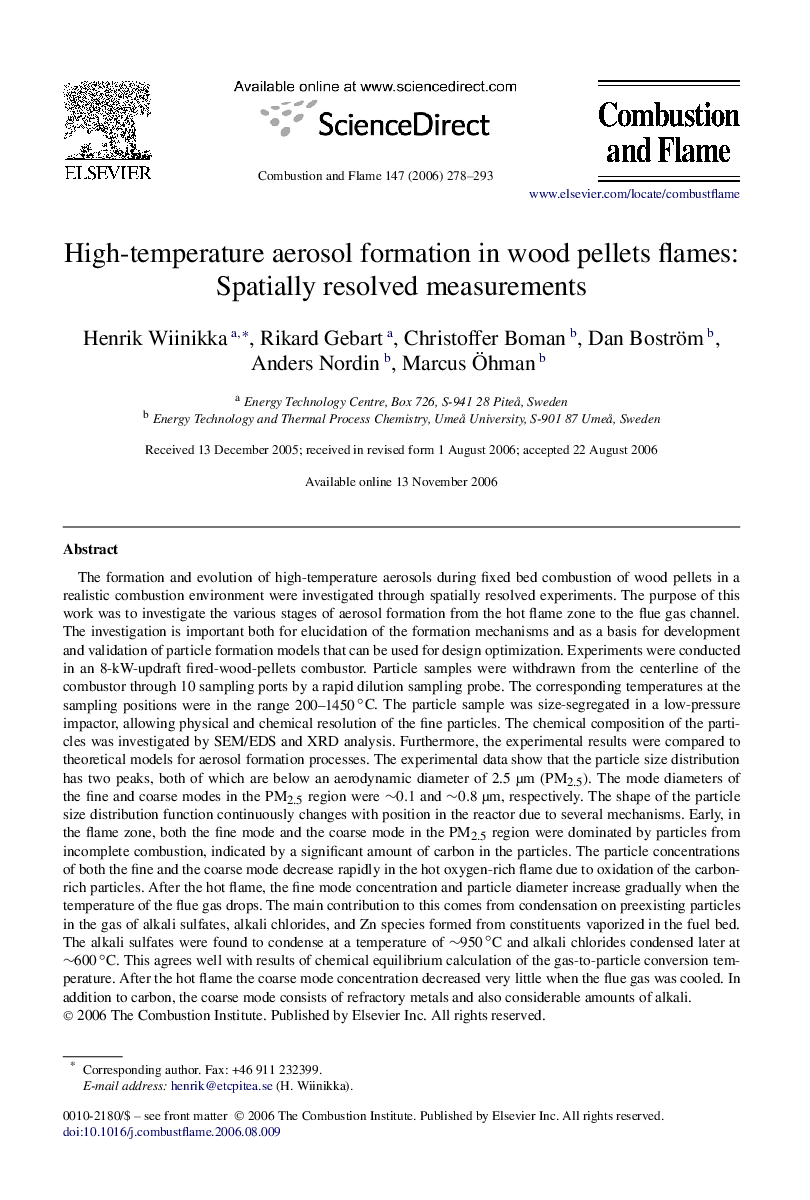| کد مقاله | کد نشریه | سال انتشار | مقاله انگلیسی | نسخه تمام متن |
|---|---|---|---|---|
| 170129 | 458078 | 2006 | 16 صفحه PDF | دانلود رایگان |

The formation and evolution of high-temperature aerosols during fixed bed combustion of wood pellets in a realistic combustion environment were investigated through spatially resolved experiments. The purpose of this work was to investigate the various stages of aerosol formation from the hot flame zone to the flue gas channel. The investigation is important both for elucidation of the formation mechanisms and as a basis for development and validation of particle formation models that can be used for design optimization. Experiments were conducted in an 8-kW-updraft fired-wood-pellets combustor. Particle samples were withdrawn from the centerline of the combustor through 10 sampling ports by a rapid dilution sampling probe. The corresponding temperatures at the sampling positions were in the range 200–1450 °C. The particle sample was size-segregated in a low-pressure impactor, allowing physical and chemical resolution of the fine particles. The chemical composition of the particles was investigated by SEM/EDS and XRD analysis. Furthermore, the experimental results were compared to theoretical models for aerosol formation processes. The experimental data show that the particle size distribution has two peaks, both of which are below an aerodynamic diameter of 2.5 μm (PM2.5). The mode diameters of the fine and coarse modes in the PM2.5 region were ∼0.1 and ∼0.8 μm∼0.8 μm, respectively. The shape of the particle size distribution function continuously changes with position in the reactor due to several mechanisms. Early, in the flame zone, both the fine mode and the coarse mode in the PM2.5 region were dominated by particles from incomplete combustion, indicated by a significant amount of carbon in the particles. The particle concentrations of both the fine and the coarse mode decrease rapidly in the hot oxygen-rich flame due to oxidation of the carbon-rich particles. After the hot flame, the fine mode concentration and particle diameter increase gradually when the temperature of the flue gas drops. The main contribution to this comes from condensation on preexisting particles in the gas of alkali sulfates, alkali chlorides, and Zn species formed from constituents vaporized in the fuel bed. The alkali sulfates were found to condense at a temperature of ∼950°C and alkali chlorides condensed later at ∼600°C. This agrees well with results of chemical equilibrium calculation of the gas-to-particle conversion temperature. After the hot flame the coarse mode concentration decreased very little when the flue gas was cooled. In addition to carbon, the coarse mode consists of refractory metals and also considerable amounts of alkali.
Journal: Combustion and Flame - Volume 147, Issue 4, December 2006, Pages 278–293